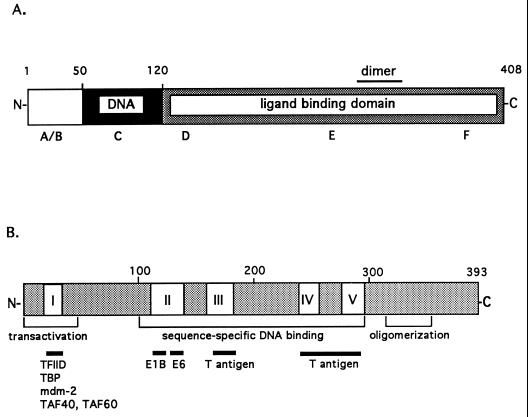FIG. 5.
Domain structures of cT3Rα (A) and p53 (B). (A) cT3Rα, like other members of the nuclear receptor family, can be divided into six distinct regions (A to F) (18). The N-terminal A/B region is the least-conserved region among the nuclear hormone receptors. The highly conserved 68-amino-acid C domain (amino acids 51 to 119) is organized into two zinc finger DNA-binding structures. D, E, and F comprise the ligand-binding domain (amino acids 120 to 408) (37). (B) p53 can be divided into three regions. The N terminus (amino acids 1 to 43) contains a strong transcription regulatory region (20, 61, 69) and interacts with a number of proteins, including mdm2 (39). The central region (amino acids 100 to 300) contains the sequence-specific DNA-binding domain (69) and four regions (II to V) that are evolutionarily conserved within all vertebrate species (59). The C-terminal region contains an oligomerization domain that dictates the formation of stable p53 tetramers (amino acids 340 to 393) (60) and a nonspecific nucleic acid-binding domain (amino acids 330 to 393) (66).

